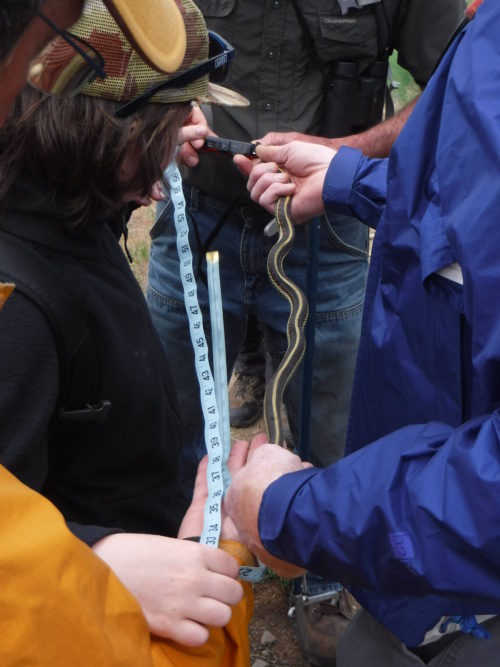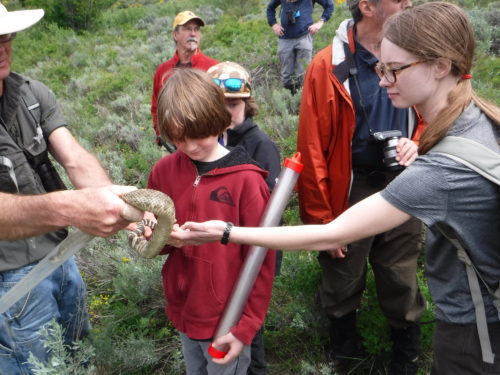Snakes, Amphibians and a whole lot of learning!

Editor’s Note: Do not attempt to capture any wildlife, especially snakes. This class was done with trained professionals who kept all participants safe with decades of experience.
As a graduate student at the North Cascades Institute, most of my experience in environmental education over the past year has been teaching fifth graders in Mountain School and graduate natural history retreat classes. Earlier this month I got to experience a whole new side to environmental education at the institute: adult field classes.
Designed to get students of all ages (10-110) into the outdoors, these excursions happen all over the greater North Cascades bio-region. On Mother’s Day I went over to the Methow Valley to help John Rohrer and Scott Fitkin, district biologists, with the Snakes and Amphibians of the Methow Valley class.

John Rohrer, District Biologist for Methow Valley Ranger District in National Forest.

Scott Fitkin, District Wildlife Biologist for Washington Department of Fish and Wildlife.
I had met both John and Scott in February on a natural history retreat, where they taught my graduate cohort about their work with wolverines. Being just as enthusiastic and energetic about snakes and amphibians, we started off the day at the Methow Ranger District Station in the Methow Valley. They then instructed us that we would go to various locations in the valley throughout the day, to see as many snakes and amphibians as possible. We were also going to be taking measurements on each snake we could find, to build upon past knowledge and see how the populations could be changing over time.

Participant holding a racer snake.
At our first location, John and Scott informed us that there were no rattle snakes in the area, so we could pick up any snake we found! Darting throughout the brush participants were picking up and noticing snakes left and right. As soon as we would finish measuring one someone would bring another one for Scott to take notes on.

Participants getting ready to measure a garter snake.
In the first location we found racer, garter and gopher snakes. While gopher snakes look very similar to rattle snakes, they don’t have the characteristic rattle and are safe to pick up (with professional experience of course).

Gopher snake.
When we did venture into rattle snake territory, John and Scott would capture the snake and place it in a tube (like the cover photo). When the snake was halfway though the tube they would hold it in place, not allowing it to escape in either direction of the tube (very similar to surgical cones placed on dogs).

Participants petting a rattle snake.
What made this an amazing class was not the wildlife I saw, but the interactions between the participants and their natural neighbors. We had students as young as ten to as old as over 80, but you would never tell just by looking at how engaged everyone was. Each person was invested in each snake, being safe but allowing themselves to see how wonderful these creatures truly are.

Looking for amphibians.
The snakes definitely stole the show, since we couldn’t find many amphibians. We caught a few tadpoles over the whole day…but 42 snakes in total! What a great day to get out and learn about our natural neighbors.
This was one of our family field classes. There are still positions available for our other classes (like exploring wild flowers on Sauk or spring birding with Libby Mills) so check them out!


What a great class! I love these family field seminars and the wide range of ages and interests. Keep up the good work.